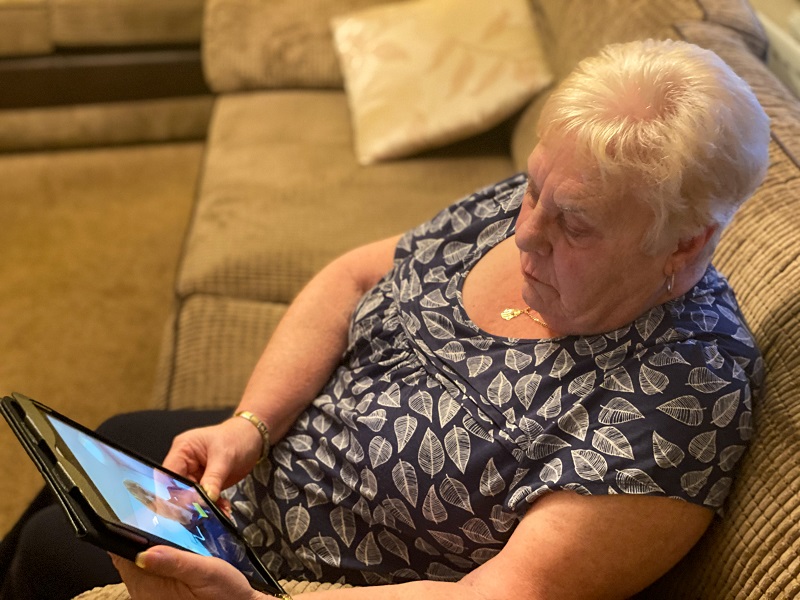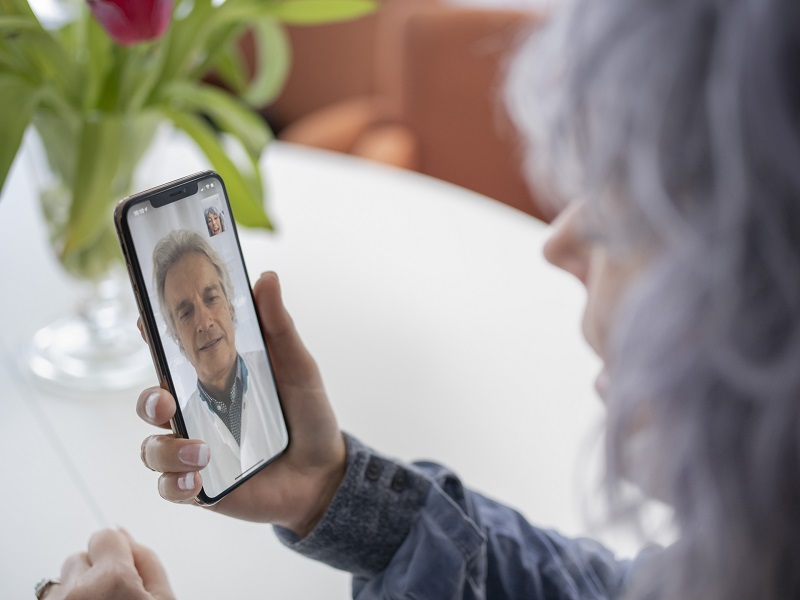The COVID-19 pandemic put massive pressure on already-overstretched healthcare systems worldwide.
But, as frontline staff struggled to treat Coronavirus patients, as well as those in hospital for other conditions, two things happened behind the scenes.
Firstly, suppliers and manufacturers bolstered their production lines and developed new tools, products, and solutions to help improve patient outcomes and drive efficiencies; and, secondly, the health service itself became much better at recognising and adopting these innovations.
Early discharge
In particular, modern technology, which was previously massively underutilised within the UK health sector; was suddenly identified as key to overcoming the challenges of the pandemic.
One example of this can be seen at The Royal Wolverhampton NHS Trust, which has rolled out a highly-innovative COVID patient remote monitoring solution from Dutch digital health specialist, Luscii.
Launched at the trust in February, the Covid Virtual Ward (CVW) was established to enable COVID-19 patients who had been admitted to hospital to be discharged early and safely monitored in their own homes.
Patients return home with an oxygen monitoring device and take daily readings before entering those into a tailor-made app.
A proprietary AI system then analyses the readings, monitoring for any sign of measurement abnormalities which could mean medical attention is required.
Our app and platform determines if there is an increased risk for that particular patient and notifies the clinician or nurse so action can be taken
And, if a patient begins to deteriorate, even with no outward signs of distress, this is quickly identified and trained hospital staff are alerted, enabling effective and rapid intervention.
This frees up valuable hospital space while ensuring patients still receive pro-active treatment in the community.
Speaking to BBH this week, Luscii co-founder, Ronald Scheffer, explains: “Our technology has been in development for 15 years and was being used prior to COVID for a myriad of conditions, such as chronic and acute heart failure.
“And, while COVID introduced different parameters, such as the need for SATs, the approach is quite similar.”
Worldwide adoption
When Coronavirus cases began to be reported around the world, the chairman of the board at OLVG City Hospital of Amsterdam asked the company to help with challenges around increasing pressure on its emergency department.
And, in just five days, Luscii tailored its platform based on emerging World Health Organization (WHO) guidance.
Other Dutch healthcare providers quickly followed suit, before the solution was adopted more widely, including by UK healthcare organisations.
“In the UK NHSX stepped in and really took the lead in bringing this to the NHS,” said Scheffer.
“If a patient has COVID then being in hospital is not a particularly-safe place, so instead of putting someone in a bed, or in a hallway due to a lack of beds, the platform enables doctors to send them home.
“The patient gets an invite through their smartphone or tablet and they can onboard the programme and will be given a pre-defined protocol aligned with standard operating procedures. So, for example, they have to measure their oxygen SATs and will answer questions about shortness of breath etc.
“Our app and platform then determines if there is an increased risk for that particular patient and notifies the clinician or nurse so action can be taken, whether that be a video call or a home visit.”

Early feedback has revealed that patients are discharged up to six days earlier when using the app, and it has been shown to improve patient satisfaction
Patient satisfaction
Early feedback from hospitals using the technology has found patients are discharged six days earlier than normal and there is a significant cost saving.
But, equally important, patients also rated the solution 4.5 stars out of 5, showing a significant improvement in patient satisfaction.
If a patient has COVID then being in hospital is not a particularly-safe place, so instead of putting someone in a bed, or in a hallway due to a lack of beds, the platform enables doctors to send them home
The solution is suitable for patients with quite-severe symptoms and who are on up to 2.5 litres of oxygen a day.
“One of the real benefits is patients are back home with their loved-ones,” said Scheffer.
“They are still seriously ill, but they comment that, rather than being in hospital, they have their lives back as they are around their families.”
And, even when the COVID pandemic is over, Luscii is one of a number of newly-adopted technologies that has the potential to continue driving efficiencies.
Scheffer said: “After COVID, this sort of technology provides a massive opportunity for community care more broadly.
“We currently have around 100 medical devices our system can link to, from oxygen and lung function tests, to blood pressure monitors, breathing rhythm monitors, and sleep monitors. It can accommodate most things and we really think the best is yet to come, with new devices and new peripherals coming in every other week.
“I truly believe that, moving forward, we can support practically all conditions.
“Currently, we can support around 40, from gynaecology to heart failure and oncology.
“We can also use the system to monitor patients after discharge, with the potential for people to be discharged from hospital much earlier than at present.

If a patient's vital signs readings give cause for concern, the app notifies medical staff
A change of mindset
“COVID has changed the mindset of the healthcare community and we are going to be able to build upon this foundation.
“The pandemic meant there was an acute need for technology and proved that when staff are committed to embracing it; it can be used to the benefit of patient care.
“The discussion has shifted from hospitals saying ‘this is a good idea’ to ‘how are we going to use this for other conditions’.
“It’s about flexibility and putting doctors and nurses in the driver’s seat.
Early feedback from hospitals using the technology has found patients are discharged six days earlier than normal and there is a significant cost saving
“We are now talking a lot more about virtual wards and how can we use this technology for wider self monitoring and remote care.”
The team at Wolverhampton is already looking at using the solution for longer-term remote monitoring in order to reduce unnecessary GP appointments and A&E visits for vulnerable people suffering from ongoing conditions such as COPD, respiratory disease, and diabetes.
The solution is also being used by other UK trusts, including hospitals in Sunderland, Airedale, and London, and was recently awarded the Prix Galien Excellence Covid-19 MedTech Award.
